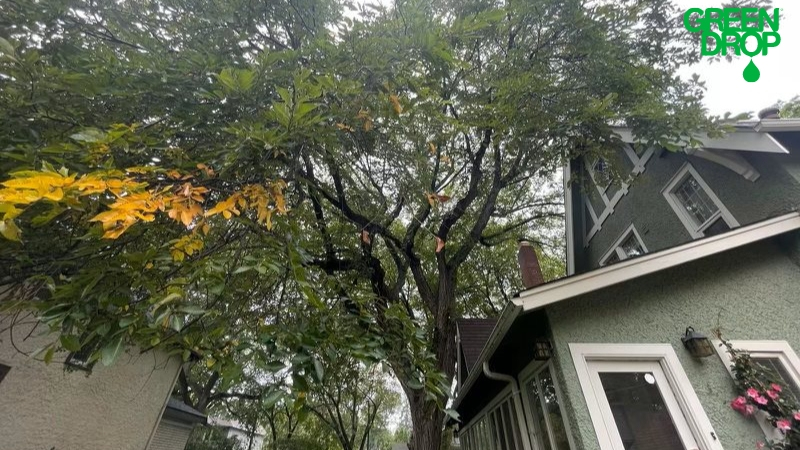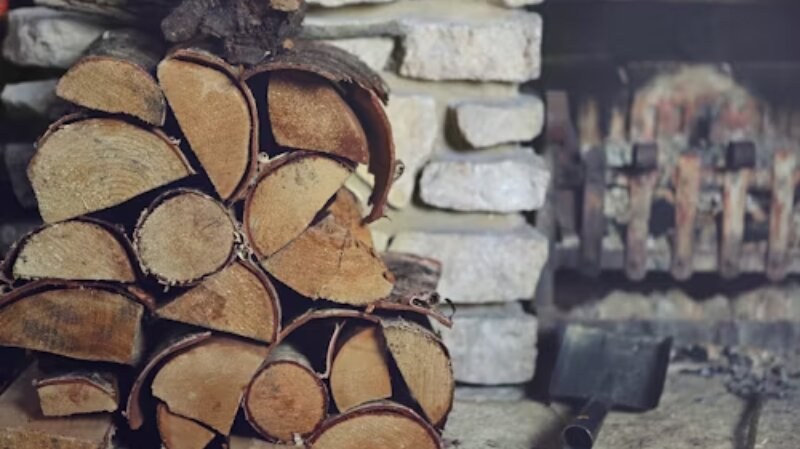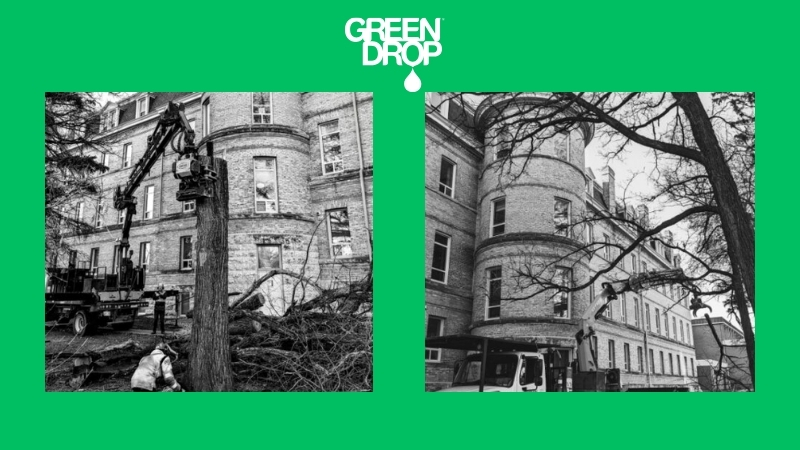Dutch Elm Disease in Regina: Should You Be Worried?
Reading time: 6 minutesTrees are more than just a landscaping ornament; they’re a valuable resource for your home and community. They keep your property shaded in the summer, break harsh winter winds, and produce the oxygen you need for breathing. Making sure your trees are pest and disease-free is crucial to both their appearance and longevity.

If you’re a Regina homeowner with trees in your yard, you need to know about Dutch Elm Disease. This condition is serious and can result in severe damage to your trees, robbing your landscaping of the beauty it once held.
Come with us as we learn about DED in Regina and what you can do to keep your trees healthy with the help of our ISA-certified tree specialists.
What Is DED & What Are Its Signs?
DED, or Dutch elm disease, is a fungal disease primarily affecting elm trees. According to the Invasive Species Centre, it’s spread by various species of elm bark beetles. It’s believed that the disease originated in Holland in the 1920s and spread throughout Canada from East to West.
As these boring insects eat the wood and lay eggs in the tree’s crevices, they leave behind mycelium spores that create a network of fungi throughout the tree’s vascular system. Over time, this prevents the tree from getting water and nutrients from the ground.
DED also spreads via root grafts between affected trees and healthy ones. The condition is almost always deadly and can cause severe dieback in as few as six weeks from the start of infection.
The Government of Saskatchewan lists these two primary signs of DED that tend to appear in late spring:
- Sparse leaves in Spring. By late summer, leaves may turn yellow and fall prematurely
- Leaves curl and turn brown but do not fall from the tree
- Wilting or discoloured leaves on upper branches (called flagging) during the summer
- Red streaks seen in the sapwood of an infected branch when cut (called staining)
However, it's important to note that many tree diseases can cause similar symptoms. The only way to know for sure whether you're dealing with a case of Dutch elm disease is to have a wood sample lab tested to confirm the presence of Ophiostoma Ulmi or O. Novo-Ulmi spores.

Past Cases of DED in Regina
Dutch elm disease (DED) was first discovered in Regina in 1981. Despite its nearly 50,000 elm trees, the city only had 110 cases throughout the entire 40+ year period until 2019. DED has become more of a problem for Regina residents in recent years. The most susceptible trees are American elms, rock elms, slippery elms, and red elms.
The issue is so serious that Saskatchewan has issued an annual ban on the cutting and removing elm trees between April 1st and March 31st. Residents are strongly encouraged to avoid pruning, removing, and chipping elm trees during this time since any cuts or open areas will quickly attract boring insects.
How to Avoid Dutch Elm Disease When You Live in Regina

Being proactive about your tree health is critical in preventing diseases like DED from developing. Tree Canada, a non-profit charity and arboriculture resource, gives some examples of ways to prevent and treat Dutch elm disease:
- Pruning and destroying affected branches as early as possible after sighting
- Stripping the bark of affected branches
- Disinfecting tools properly in between each cut, even on the same tree
- Avoiding elm wood storage on your property
- Regular applications of fungicide
- Using DED-resistant species when planting new trees
- Controlling populations of elm bark beetles
- Trenching in between trees to prevent spread by root grafts
- Destroying root grafts before removing infected trees
Elm bark beetles don’t actually fly very far, so most of the time, these critters are transported via elm firewood between campsites to residential properties. Since you can’t see the eggs and larvae in an infected branch, many people unknowingly contribute to the spread of DED just by moving wood from one place to another. Because fungi thrive in moist, dark conditions, even very old wood may still have active pathogens that pose a threat to nearby trees.
One of the most effective ways to combat DED in your yard is simple: just keep your trees healthy. Proper watering, fertilization, mulching around your trees, seasonal pruning, and other routine tree care tasks help keep your trees strong and less vulnerable to disease-carrying insects.
How Regina Is Fighting DED
In addition to advising homeowners about the dangers of Dutch elm disease and how to prevent it, the City of Regina has developed its own program to fight DED and protect its iconic elm trees. Steps taken include:
- Properly pruning and caring for city-owned trees
- Applying pesticides targeted to elm bark beetles around city trees
- Inspection, collection, and destruction of elm firewood
- Monitoring and lab testing potentially infected elm trees
- Educating residents and business owners about DED
- Working with researchers on new DED treatments
- Planting DED-resistant tree species
While all species of elm tree can potentially develop DED, Asian elms—or, more specifically, Chinese and Japanese elms—are more resistant and hardier to the conditions needed to develop Dutch elm disease.
Regina’s multi-layer approach to managing this lethal tree disease shows immense progress. Residents can participate by notifying the city of potentially infected trees, avoiding pruning during the ban, and properly handling any wood waste from elm trees, regardless of whether they are infected.
What to Do If You Have an Infestation
Unfortunately, even the best prevention measures can’t completely eliminate the risk of your trees developing Dutch elm disease. If you notice signs of DED or suspect an infestation, it’s imperative to reach out to a tree care services professional who has experience with this condition and knows what to do.
If you catch the symptoms early enough, you may be able to prune away infected branches before the fungus spreads to the trunk. That said, there’s no cure for DED, and in many cases, tree removal may be the only option. The best results are obtained when treatment is started when 15% or less of canopy leaves are showing signs of wilting or discolouration.
Whether or not your tree will recover mostly depends on the stage of infection at the time of treatment and how much pruning has to be done to remove infected branches. If the disease has moved to the trunk, the tree may not be saved. Any nearby trees are also at risk of developing the condition if their roots come into contact with contaminated ones.
Prevention of DED By Green Drop
Fungicide Injections
We love our elm trees and do everything possible to protect them from this disease. To prevent the onset of DED fungus from growing on your elm tree, our arborists use fungicides that are directly injected into the tree(s).
We use macro-infusion technology, which injects a large volume of the solution into the tree's root flares. The solution then spreads throughout the canopy, providing an effective fungicide barrier. This treatment needs to be repeated every few years.
Basal Spray
Another alternative for the prevention of Dutch Elm Disease is Basal Spray. DED is mostly spread by elm bark beetles. By spraying insecticide onto the lower 50cm of elm trees, we control the spread of these pests and ultimately DED. This treatment is done in late summer/fall.

How Our ISA-Certified Arborists Can Help
Good tree health is more important than most people think. Keeping your trees disease-free has nearly endless benefits, ranging from beautifying your landscape to protecting your home from wind, snow, and heavy rains. Call our arborists now for a free tree care assessment for DED prevention. Don’t forget to check out our tree care packages.
At Green Drop, our ISA-certified arborists provide comprehensive tree health care in Regina and major cities throughout Western Canada, including Saskatoon, Winnipeg, Calgary, Edmonton, and Red Deer.
We take the stress out of caring for your trees so you never have to worry about finding time to water, prune, or fertilize in your busy schedule.

